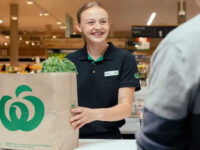
Covid-19 and its impact on bricks and mortar retail has fast-tracked the need for frictionless online offerings for consumer goods companies.
The acceleration of digital in recent years has prompted many consumer goods companies to rethink their go-to-market strategy, but the sudden onslaught of Covid-19 and its impact on bricks and mortar retail has fast-tracked the need for online offerings.
These retail challenges and competitive threats, including the rise of private label, are driving FMCG manufacturers to build relationships directly with consumers. According to a Salesforce report titled “Consumer Goods and the battle for B2B and B2C relationships”, 99 per cent of consumers goods leaders are investing in D2C strategies to do just that; to learn more from consumers who are using their products and create a trusted relationship based on transparency and authenticity.
The pandemic has highlighted the importance of convenient, frictionless shopping experiences, accessible from the comfort of one’s home.
Roula Psomiadis, Salesforce Regional Sales Director Retail & Consumer Goods, says digitising the whole customer experience, as well as the value chain in the back end of the business, is critical.
“The digital maturity that organisations came into the pandemic with has really been the decider between those who are flourishing and those who are not. Those with a mature digital engagement strategy coming in, have been in a strong position to adapt and capitalise on the changes. What we are seeing is those that didn’t, have had to quickly pivot to try and build the impetus to invest in digital engagement strategies,” Psomiadis says.
“It’s very much a question of survival. The need for businesses to actually reprioritise and invest quickly is an existential one.”
While there was a level of tolerance from consumers at the start of the pandemic, in terms of slower response times, delivery times etc, Psomiadis says this is no longer the case.
“Now that the pandemic has become a part of our new “normal”, consumer expectations are back up; whatever their last “best” experience was, with any other provider, that’s now the benchmark.”
And brands are not just embracing digital in terms of their consumer offering, Psomiadis has seen an increase in the number of consumer goods companies that are rethinking their workplace strategy.
“Most companies have never had to manage a remote workforce before, and the processes and workflows that go with that. Given the remote nature of today’s employee distribution, a common [workplace] platform has never been more important,” she says.
E-commerce growth was evident before the pandemic. While 95 per cent of purchases were happening physically, there was 40 per cent year on year growth in online, the Salesforce report shows.
“There was a runway before Covid,” says Imran Khan, Director CPG/FMCG GTM Strategy at Salesforce.
“Australia was a lag out compared to Europe. There was a bit of complacency.”
Major FMCG brands, which have traditionally been separated from the end consumer in the B2B realm, have realised that they can no longer rely on retailers when getting to know their consumer, as smaller more agile brands are swooping in and building relationships directly, offering more relevant offers and building market share as a result.
“It’s about staying relevant and agile,” Khan says. “Consumer goods brands have always recognised that they are distanced from the end consumer by their retail partnerships. It means that, despite being an industry built around consumer needs, it can be hard to adapt around today’s fast-changing customer. Today, digital technology allows businesses to grasp some of that power.”
Personalisation is at the heart of much success in this area. Khan points to Kellogg’s as one example of a business that used personalisation to inform how it serves the consumer. By adding a temporary website and inviting customers to design their own granola bar, the cereal giant could pinpoint the best product for success.
“For six months they gathered all that data and established based on demographics, what type of bars would sell more. Then there was a whole new NPD strategy, and they went to the retailers with it. It was an amazing way to connect.”
Khan says brands need to find a way to learn about the consumer and build a segmentation approach to form a longer-term relationship.
“It’s about actually connecting your brand to the endpoint, and then using that information to build a strategy around the product development,” he says.
The rise of social media presents another opportunity for brands to connect with their audience in a place that suits them. Khan says the easier and more convenient the buying process, the more successful brands will be.
“Remove barriers, don’t force a customer to go through the website when you can sell directly through a social media platform.”
Salesforce has launched a new Consumer Goods product that aims to promote more collaborative relationships across the entire value chain and help brands better deliver on their promise to consumers.
Read the customer stories from the Salesforce Live: Retail and Consumer Goods Virtual Event.
Download the Salesforce industry insight report on Consumer Goods and the B2B and B2C Battleground.








